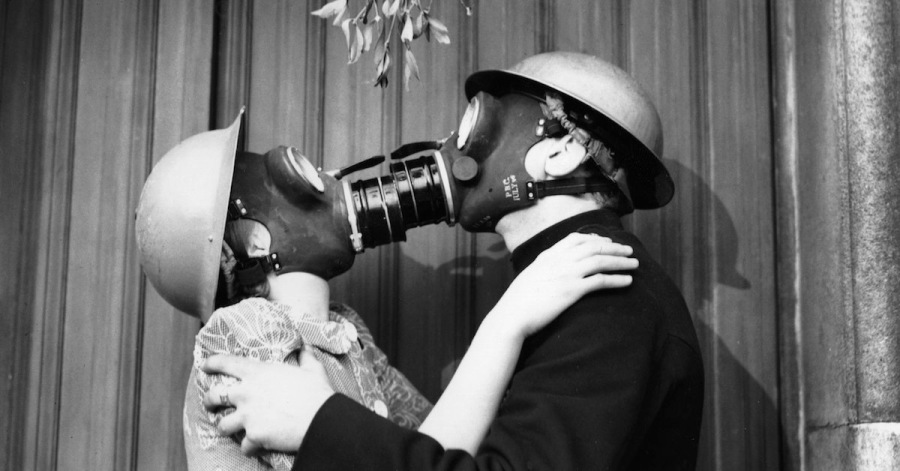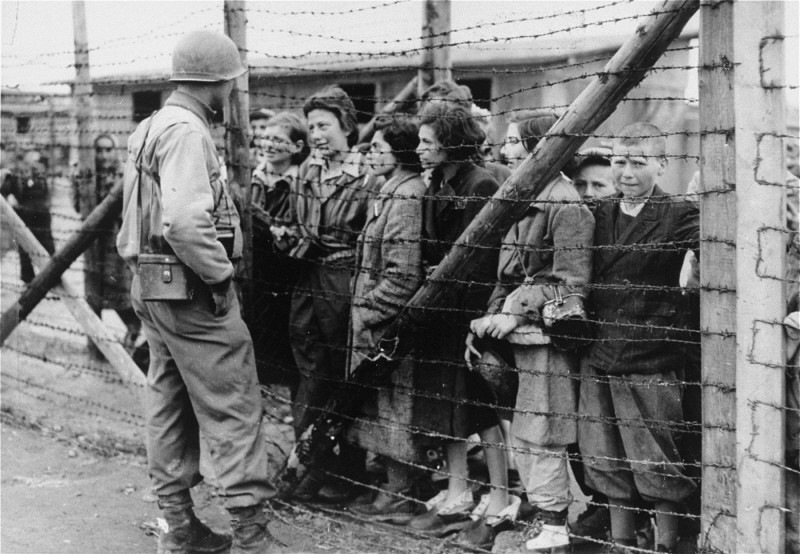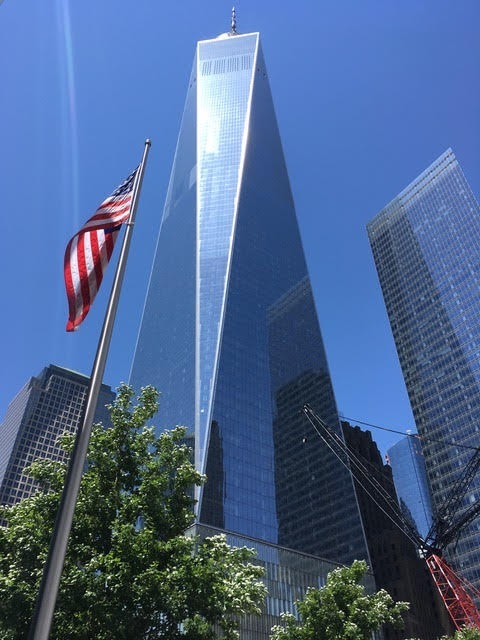Humankind’s Adaptability to Crises: Pandemics Not Excluded

Humankind’s ability to rise to crises and extraordinary challenges has some prominent examples from the past. When things appear bleakest, with no light at the end of the tunnel, there’s a tendency for people to turn pessimistic about the future. “We’re doomed as a society” comes the refrain from some quarters. Survivalists kick into gear, warning people about the imminent end—which also spawns the sales of survival gear and food supplies, not to forget shelter.
It doesn’t help that in the age of social media and hyper-vigilant news outlets, both preying on human fear, that information gets distorted. Indeed, “fake news” gets manufactured, with the aim of financially exploiting this fear and to further inflame it.
It’s only when people get through a crisis that they emerge stronger and are able to reflect on what they experienced. Personal leadership matters. This post provides three prominent examples of how humans have adapted to very dark periods. The first two examples relate to the rise of the Third Reich (1933-1945) under Adolf Hitler and the World War Two.
First we’ll look at The Blitz, Germany’s bombing campaign against Great Britain during 1940-41. Hitler had become frustrated with the inability of the Luftwaffe to gain air superiority over Britain’s Royal Air Force. He then changed tactics to bombing towns, cities, and industrial plants in an effort to demoralize Britons. During the bombing campaign, the Luftwaffe dropped over 100 tons of explosives, killing an estimated 40,000 Britons. Indeed, during one six month period it took 1,700 freight trains to haul away 750,000 tons of rubble from London.
To try to protect its citizens, Churchill’s government used subway tunnels and other underground basements as communal shelters. Although subway (“tube”) tunnels were used to some extent during World War One, there was reticence to do so in the second world war for reasons of allowing the system to continue operating. However, the need to protect citizens grew as Hitler persisted in his efforts. (Above photo: Britons celebrating “Blitzmas” 1940)
As one American expressed at the time: “By every test and measure I am able to apply, these people are staunch to the bone and won’t quit … the British are stronger and in a better position than they were at its beginning”. People referred to raids as if they were weather, stating that a day was “very blitzy.”
Those working in the fields of psychology and psychiatry expected that citizens would require counselling and treatment from what was called shell shock (now PTSD), common among combat soldiers. But this need never arose in any meaningful way. Churchill’s extraordinary leadership during the war, combined with the tough resolve of Britons and their dry sense of humour, enabled the population (especially in London, but over 15 cities and towns as well) to persevere. The comradery and cohesiveness of citizens during a very dark and uncertain time in Great Britain’s long history prevailed in the end.

Concurrent with the bombing of Great Britain, what is unquestionably the darkest period in modern human history was taking place: Nazi concentration camps.
While historians have spent years documenting and trying to estimate the numbers of people killed by the Nazis, the following is generally agreed upon for (using a selection of certain groups):
Jews: 6 million
Soviets: 5.7 million (not including 1.3 millions Jews as part of above)
Roma gypsies: 250,000
Serbians: 312,000
Homosexuals: ranging from hundreds to thousands
With respect to the many concentration camps, the Auschwitz complex had the most deaths at a staggering one million, followed by Treblinka 2 (estimated 925,000) and Belzec (435,000). The magnitude of the numbers of Jews and others systematically murdered makes one’s head swim, and hard to grasp that a genocide could be so organized and executed. However, behind each and every death was a human face: mother, father, sister, brother, grandpa, grandma. (Above photo: U.S. soldier at concentration camp upon liberation)
Viktor Frankl’s 1946 book described his experiences at four German-run concentration camps: Theresienstadt, Auschwitz, Kaufering and Türkheim. The Austrian neurologist and psychiatrist began his career while still a medical student, counselling young people on suicide prevention. At the mere age of 25 he began working at the Steinhof Psychiatric Hospital, and between 1933 and 1937 was treating 3,000 patients a year. It was in 1940 when working in Vienna that he was deported to a concentration camp.
During his imprisonment, Frankl began documenting the conditions he witnessed. He collated his observations into three stages of what the prisoners went through:
- initial shock of arrival
- apathy once acclimated to the camp’s conditions and a focus of self-survival, including close friends
- Depersonalization, bitterness, and disillusionment once freedom was attained. No one was waiting for them when they arrived home.
Frankl’s concise “Man’s Search for Meaning,” written in just over a week in 1946, concluded that the deepest desire for human beings is to find meaning in life. If they can achieve this then they can survive anything. In reference to his experiences in concentration camps, Frankl decided that these would help make him a better person. His own suffering provided him deep insights and learning.

The stunning loss of life in such a short time (2,996 and 25,000 injuries), the ensuing financial upheaval (eg, $40 billion in insurance losses), and business damage (18,000 businesses lost or disrupted) underscore the first direct attack on American soil. However, Brown University in 2018 estimated that the total costs to the U.S. were $5.93 trillion, comprising mostly the War on Terror and care for veterans.
While the resiliency of New Yorkers, and Americans more broadly, following 9/11 was commendable, with the city’s economy rocketing upwards in the ensuing years, the problem of PTSD not surprisingly accelerated. Scientific American in 2002 found that PTSD among New Yorkers and those present on September 11th was 11.2 percent, almost three times higher than the national average. Because of PTSD’s insidious nature, it remains an important issue to address.
In my four trips to New York City between May 2017 and May 2019, New Yorkers I met said they couldn’t bring themselves to visit the 9/11 museum or the new World Trade “Freedom” tower. The memories of that fateful day were still too painful for them to visit what are billed as among the city’s top two tourist attractions. These individuals I spoke to had either worked in the immediate vicinity of the World Trade Center, and luckily escaped with their lives, or had friends who perished when the two towers collapsed.
It’s still somewhat hard to grasp that many young people who are about to enter the work force were born after 9/11. They don’t remember the panic and uncertainties of that blue sky Tuesday morning. And you didn’t have to be an American to feel a sense of dread and loss: from Canadians to Europeans to Australians to Asians, the world mourned—and feared what could be next. But the world moved on as always, whether it’s fighting terrorism or adapting to rising sea levels due to climate change.
Yet the human race, despite its tendency to wait till a major problem hits it in the face, adapts. People are inherently creative and innovative, as witnessed by what has taken place to date with the SARS-CoV-2 pandemic (and Covid-19 syndrome). Automotive companies have stepped forward to make hospital ventilators, individuals have sewn hundreds of thousands of non-medical masks, volunteers shop for home-bound seniors, small businesses have created new ways to serve customers safely, and over 100 vaccines are in development in several countries to defeat Covid-19.
The human race adapts.
That’s been it’s history and evolution.
And we’ll all get through this pandemic if we’re patient, respectful of others, listen to our local medical authorities, and adapt our daily routines to the bigger goal of coming out the other side stronger and better prepared to confront the next major global crisis.
Because there will certainly be one.
Never give in, never give in, never, never, never, never—in nothing, great or small, large or petty—never give in except to convictions of honour and good sense. One always measures friendships by how they show up in bad weather. Success is not final, failure is not fatal: it is the courage to continue that counts. —Winston Churchill
Articles from Jim Taggart
View blog
Your faithful correspondent has been a long-time proponent of self-empowerment, writing extensively ...

Many years ago, I watched Eco-Challenge 2000 on the Discovery Channel (a show that ran from 1995 to ...

The literature on inter-generational differences has been in hyper-drive for a while. Think tanks sp ...
You may be interested in these jobs
-
Director, Municipal Enforcement
Found in: beBee S2 CA - 1 week ago
Town of Oakville Oakville, CanadaDirector, Municipal Enforcement, Town of Oakville · The Town of Oakville is a sought-after place to live and work. With a growing population of over 231,000, Oakville takes pride in being a well-connected community that's at the centre of it all. Bordered to the south by Lake Ont ...
-
bookkeeper
Found in: Talent CA 2 C2 - 5 days ago
Minuteman Press Surrey, CanadaDurée de l'emploi: Permanent · Langue de travail: Anglais · Heures de travail: 32 to 40 hours per week · Education: · Expérience: · Education · College/CEGEP · or equivalent experience · Tasks · Calculate and prepare cheques for payroll · Keep financial records and establish, m ...
-
CGSB UT Level 2/Phased Array
Found in: Talent CA C2 - 4 days ago
Streamline Red Deer, CanadaREQUIRED QUALIFICATIONS: · High school diploma or GED equivalency · Certifications for any or all of – MT2 or PT2 · Additional NDE/API certifications are considered an asset. · Current First Aid, H2S Alive, Confined Space Entry/Rescue, Fall Protection, and WHMIS training · Valid ...



Comments